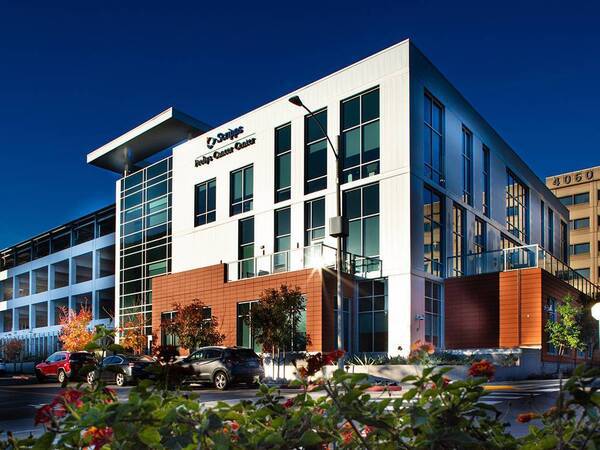Kelly O’Connor found purpose after cancer by helping others through their care. Read Kelly's story
Our team is here for you, Monday - Friday, 7 am - 7 pm, to help with information about appointments, locations, insurance questions and more. Call us at 800-727-4777. Or complete the form below and we will contact you within one business day.
Guiding You Through Your Cancer Care with Expertise and Support
When cancer changes everything, you need care that’s as strong as you are. At Scripps Cancer Center, we’re here to guide you every step of the way — providing advanced treatment options and integrated, collaborative care personalized to your unique needs.
You’re at the center of care
You’re at the center of care
Nationally recognized as a leader in cancer treatment, Scripps Cancer Center provides comprehensive cancer diagnosis, treatment and prevention with a collaborative team approach — and everything we do focuses on you.
Scripps has treated patients with nearly every kind of cancer, from all walks of life. And we know that no two patients are the same. Your Scripps multidisciplinary team designs your treatment plan around you — your medical needs, your lifestyle, your values and your goals for the future.

Mark Desalvo used art to help him beat tonsil cancer.
Cancers we treat
View the full list of cancer types treated at Scripps.
Discover why patients choose Scripps Cancer Center
You’re at the center of a team of specialists with the latest technology and treatment options.
Scripps is consistently recognized for our expert cancer specialists, high-quality and compassionate care:
- Newsweek named Scripps Memorial Hospital La Jolla and Scripps Green Hospital to their annual list of America's Best Cancer Hospitals for 2023.
- Scripps Health was named among the top 5 medium-sized US health systems in the nation by Merative, formerly IBM Watson Health, for the sixth time. Scripps is the only health provider in San Diego County to be included among a broader list covering the top 15 large, medium and small systems across the United States.
- Scripps Health’s hospitals, clinics, outpatient imaging centers and supporting facilities have several prestigious accreditations, including the American College of Radiology distinction.
- Scripps Memorial Hospital La Jolla, Scripps Green Hospital and Scripps Memorial Hospital Encinitas earned five-star ratings from The Centers for Medicare & Medicaid Services in its Overall Hospital Quality Star Ratings for 2023.
No one wants to think about a cancer diagnosis. But when it happens, you need guidance, support and expert, compassionate care from people who understand what you’re going through.
Scripps Cancer Center treats patients with every kind of cancer, from all walks of life. And we know that no two patients are the same. Your Scripps multidisciplinary team designs your treatment plan around you — your medical needs, your lifestyle, your values, and your goals for the future. It’s your personalized road map to your best outcome, and your entire team is traveling with you.
Scripps Cancer Center takes a collaborative, multidisciplinary approach personalized to you. We pull together a comprehensive team of experts from all aspects of cancer care, including medical oncology, radiation oncology, surgical oncology, pathology, laboratory, diagnostic imaging, research, and other clinical and support services. Research is the backbone of eradicating cancer. Scripps has long been actively involved in leading-edge clinical and translational research, bringing new treatments from the research bench to your bedside.
Our tumor boards bring specialists together to review a patient’s treatment plans, sharing their collective knowledge and expertise to ensure you receive the best possible care from diagnosis to recovery.
Your care team works together to coordinate your care, share updates and make your life as stress-free as possible — so you can focus on getting well.
Our comprehensive approach combines our multidisciplinary teams with some of the most advanced tools to diagnose and treat cancer — including many leading-edge therapies — to focus on your individual needs.
- Precise surgical capabilities at our five hospitals throughout San Diego, including minimally invasive laparoscopic and robot-assisted procedures that can mean fewer incisions and faster recovery.
- Specialists in interventional oncology who use the most advanced image-guided technology to detect and treat tumors.
- Chemotherapy and drug infusion centers that provide the latest therapies to reduce side effects, such as nausea and hair loss, in comfortable, soothing environments.
- A full range of advanced internal and external radiation therapy methods to target tumors while protecting surrounding healthy tissues.
- Three dedicated breast care centers providing breast cancer diagnosis, prevention and support services.
- Integrative therapies especially for cancer patients, including yoga and meditation, at Scripps Center for Integrative Medicine.
Early lung cancer screening got Dennis H back to his active lifestyle.
Your care beyond treatment
Scripps Cancer Center offers extensive patient services and resources to support and guide you through your cancer journey from people who understand what you’re going through.
Our Nurse Navigator Program is one of the many ways Scripps Cancer Center practices personalized care for you or your loved one. By partnering with a registered nurse who is specially trained in oncology (the study and treatment of cancer) during your intake process, you can more easily transition to the cancer care team who will develop the most effective treatment plan for your particular cancer.
The best cancer care includes more than medical treatment. Scripps Cancer Center offers support groups for people living with cancers, as well as services to help you with the emotional, physical, financial and lifestyle aspects of cancer. From nutrition and mind-body care to guidance from social workers, we’re here for you with an array of cancer support services and resources to help you every step of the way.
Good nutrition before and during cancer treatment helps patients stay stronger and improves outcomes. Nutrition also plays an important role in preventing some cancers and decreasing the risk of recurrence after cancer treatment. Our approach to nutrition counseling provides a caring, supportive and educational environment to help patients with cancer maintain a healthy diet.
Scripps genetic counselors provide expert, caring support and education to you and your family. We take a personalized approach to every patient, and will do our best to answer your questions and address your concerns to help you make an informed, confident decision about genetic testing.
Scripps Cancer Center recognizes that each cancer patient's journey is unique. That’s why we offer a wide range of physical rehabilitation services for cancer patients to manage the side effects of cancer treatment. Oncology rehabilitation can include physical therapy, occupational therapy or speech therapy services to manage physical and cognitive difficulties.
As you start your cancer journey and begin to understand your diagnosis and treatment options, you may have a great deal of information to process. Scripps Cancer Center is here to help you. We take a patient-centered approach to care, keeping you informed and answering your questions at every step, so you can feel confident and in control of your care.
Caring for cancer patients in locations across San Diego
Scripps Cancer Center, John J. Hopkins

Scripps Cancer Center, John J. Hopkins
10670 John J. Hopkins Dr.
San Diego, CA 92121
Scripps Cancer Center, Santa Fe Drive
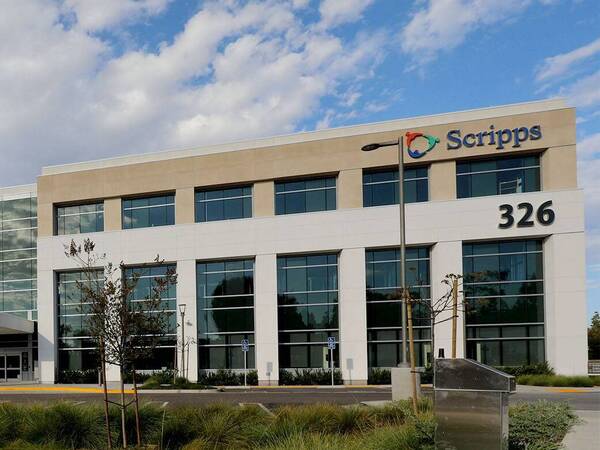
Scripps Cancer Center, Santa Fe Drive
326 Santa Fe Dr. Suite 110
Encinitas, CA 92024
Scripps Memorial Hospital Encinitas
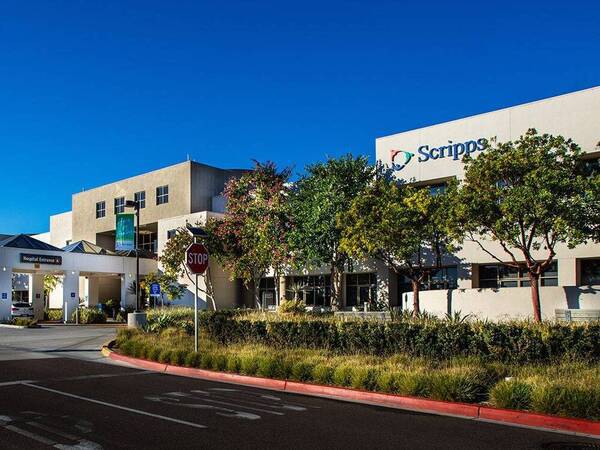
Scripps Memorial Hospital Encinitas
354 Santa Fe Drive
Encinitas, CA 92024
Scripps Memorial Hospital La Jolla
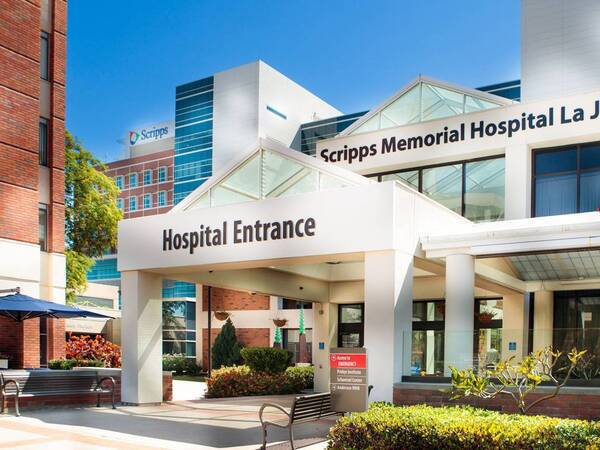
Scripps Memorial Hospital La Jolla
9888 Genesee Ave.
La Jolla, CA 92037
Scripps Clinic Rancho Bernardo

Scripps Clinic Rancho Bernardo
15004 Innovation Dr.
San Diego, CA 92128
Scripps Clinic Torrey Pines
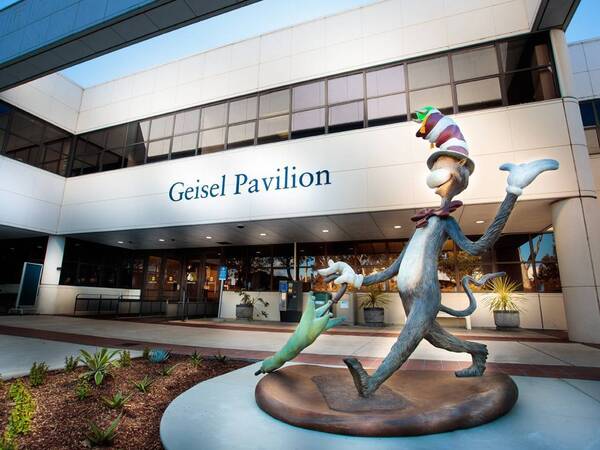
Scripps Clinic Torrey Pines
10710 North Torrey Pines Rd.
La Jolla, CA 92037
Scripps Green Hospital

Scripps Green Hospital
10666 N. Torrey Pines Rd.
La Jolla, CA 92037
Contact us
Related news
Breast Health: What to Look for and When to See a Doctor

Breast Health: What to Look for and When to See a Doctor
Learn how breast self-awareness helps detect cancer early with expert tips from Scripps Cancer Center in San Diego.
Managing Chemotherapy Side Effects: Tips for Patients

Managing Chemotherapy Side Effects: Tips for Patients
Learn how to manage side effects like nausea, fatigue and more during chemotherapy with these patient-friendly tips.
Cancer and Nutrition: What to Eat When Nothing Tastes Right

Cancer and Nutrition: What to Eat When Nothing Tastes Right
Cancer treatment can change how food tastes or smells. Try our diet tips to help you get the nutrition your body needs.
Scripps Expands Brain Tumor Treatment and Research
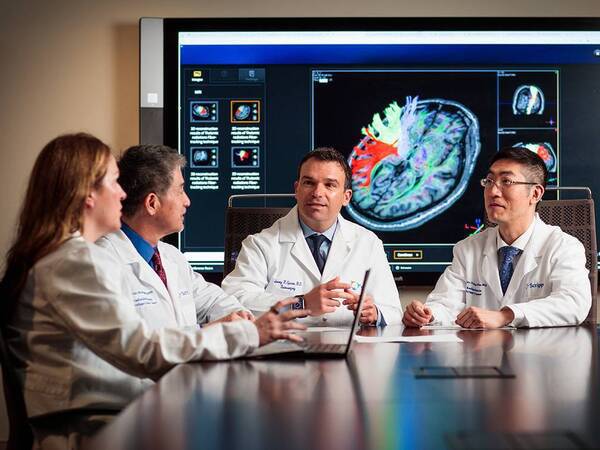
Scripps Expands Brain Tumor Treatment and Research
Scripps expands brain tumor care with expert teams, new research and clinical trials — all in one coordinated program.
What Are the Symptoms of Thyroid Cancer?

What Are the Symptoms of Thyroid Cancer?
A neck lump or hoarseness may seem harmless but could signal thyroid cancer. See your doctor — it’s very treatable when caught early.
How to Prepare for Radiation Therapy for Cancer
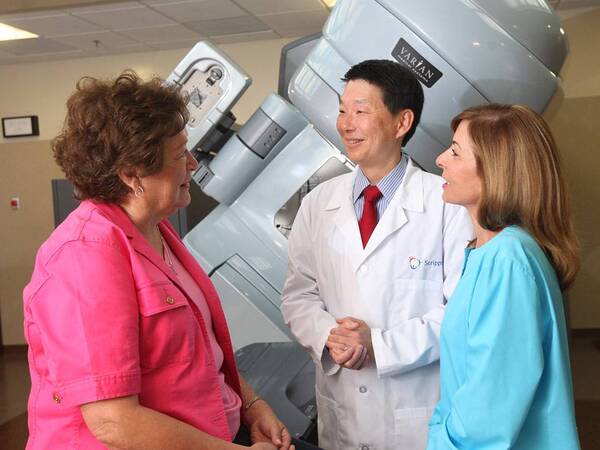
How to Prepare for Radiation Therapy for Cancer
Learn how to prepare for radiation therapy, manage side effects, and what to expect during treatment at places like Scripps Health.
How Sunscreen Helps Prevent Skin Cancer

How Sunscreen Helps Prevent Skin Cancer
Sunscreen helps prevent sunburn, premature aging and skin cancer. Learn how and why to protect your skin year-round.
What Are Common Symptoms of Head and Neck Cancer?

What Are Common Symptoms of Head and Neck Cancer?
Common symptoms of head and neck cancer include persistent lumps or swelling, voice changes, sore throat, ear pain and persistent cough.
8 Things to Know About Colorectal Cancer Screenings

8 Things to Know About Colorectal Cancer Screenings
By age 45, you should have a talk with your doctor about getting screened for colorectal cancer. Learn the different tests available.
Related classes and events
Caregiver Support Group

Caregiver Support Group
This support group offers a safe and supportive space for families caring for loved ones with serious illnesses to connect.
Nutrition and Fitness During Cancer Treatment - Virtual

Nutrition and Fitness During Cancer Treatment - Virtual
Join a Scripps dietician to discuss food flexibility for optimal nutrition during your cancer treatment.
Restorative Yoga and Sound Therapy for Cancer Patients and Caregivers

Restorative Yoga and Sound Therapy for Cancer Patients and Caregivers
Join this 60-minute experience that focuses on relaxation for patients on their cancer journey.
Restorative Yoga and Sound Therapy for Cancer Patients and Caregivers - Encinitas

Restorative Yoga and Sound Therapy for Cancer Patients and Caregivers - Encinitas
Join this 60-minute experience that focuses on relaxation for patients on their cancer journey.
Advanced Cancer Support Group - Virtual

Advanced Cancer Support Group - Virtual
Led by an experienced medical social worker, participants living with advanced staged cancer gain insight, peer support and understanding.
Cancer Survivor Support Group

Cancer Survivor Support Group
This support group is for individuals adjusting to life after cancer treatment for stage 0 to stage 3 diagnoses.
Men’s Cancer Support Group - Virtual

Men’s Cancer Support Group - Virtual
Join this group for all ages and all types of cancer diagnoses for a safe space for sharing experiences and offering mutual support.
